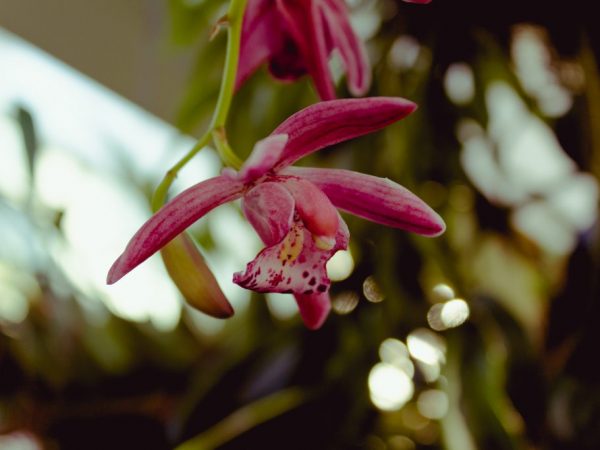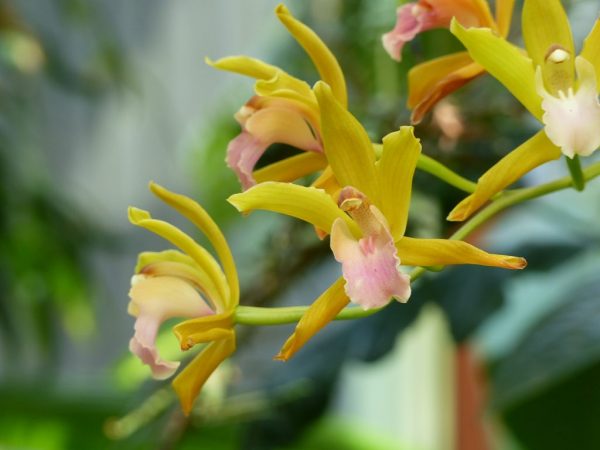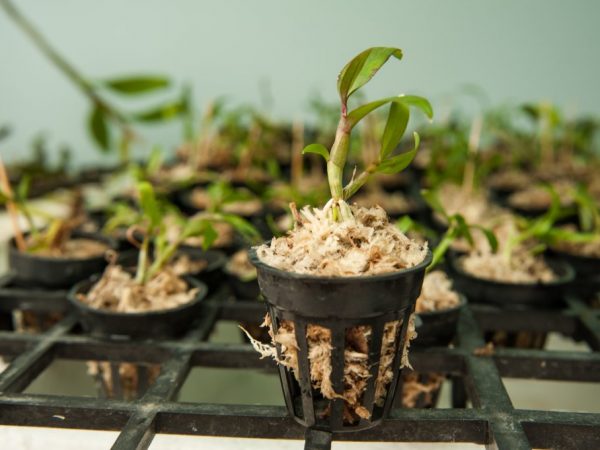Leafless cap
Orchids are flowering plants found in the wild in tropical rainforests. Their cultivation is also possible at home. But there is also an orchid that lives in our forest - a leafless head cap.

Leafless cap
Features of the view
Leafless caps (Epipógium aphýllum) belongs to the genus Caps of the orchid family. It unites all known orchids. The named genus does not differ in variety. It includes only 2 types. They are found in Eurasia, Africa and Australia. A single species grows on the territory of Russia.
The leafless perchin is a chlorophyll-free perennial plant, which in the process of development has abandoned photosynthesis. This quirk of evolution determines the way of life of a flower. It parasitizes not on living trees, like tropical orchids, but on myceliums growing in the soil. This is the only way the cap is able to survive the long and cold winters.
This orchid receives nutrients from certain species of mushrooms. The mycelium of the mycelium grows into the root system, and the saturation process takes place. This relationship between the owner and the plant that uses its vitality is termed mycoheterotrophy. Only stems with flowers are visually visible.

Leafless caps are found in Eurasia, Africa and Australia.
According to the description, the stems of the orchid reach a height of 30 cm. They have a brownish-yellowish color, and through equal distances are covered with barely noticeable single light scales. These are reduced leaves.
The inflorescence itself is located in the upper part of the stem. It includes from 2 to 8 medium-sized flowers. The yellowish flowers are adorned with pinkish, red, or pale purple spots. At first, the inflorescence brush looks drooping, then straightens. The flowers have a subtle scent that is associated with the scent of a banana.
Reproduction and habitat
This unusual orchid reproduces in two ways:
- Vegetative. On the rhizome, thickenings are formed, which are also called stolons. Stolons have a bud of growth, with the help of which a further increase in the root system occurs. This process is hidden from the eyes of the observer and requires a more thorough study. The root system is capable of occupying a large area, like the mycelium, which provides a nutrient medium.
- Seeds. Seed pods are not always formed. There are few seeds. In order for them to germinate, the presence of certain types of soil fungi in the soil of myceliums is necessary. These conditions are not always met, therefore seed reproduction is an auxiliary method for the survival of the flower.
Flowering occurs in July and August, but not every year. The orchid lives and develops underground and is capable of not making itself felt for several years. At some point, the necessary conditions are formed, and flowering stems appear on the surface. With mass flowering in a forest glade, several groups of flowers can be observed, located separately from each other.
The leafless caper prefers moist forests.It settles in shaded areas with a thick layer of damp forest litter. Loves both coniferous and deciduous and mixed forests. Occurs in small bogs fed by flowing spring waters. This determines its wide range.

Reproduction occurs by vegetative and seed methods.
Dissemination and protection
The cap is found in the area from Western Europe and Asia Minor to Siberia and the Far East, as well as in Japan and China. In Russia, it grows in the forest zone of the non-chernozem belt of the European part of the country, in the North Caucasus and in the south of Siberia and the Far East. Despite such a huge territory, it is rarely possible to meet him. This is due to both its secretive lifestyle and high demands on the quality of the living environment.
The survival of this type of orchid is directly related to human activities. Deforestation, reclamation work to drain the area, construction of a road network - all this predetermines the reduction in the number of this type of orchid.
The sheetless cap was included in the Red Book of the USSR in 1978 and 1984. Currently, it is listed in the Red Book of the Russian Federation, and is also listed in the regional lists of rare and endangered species in 47 constituent entities of the Russian Federation. Its status is defined as a species with a declining population, vulnerable.
Conservation measures include identifying plant communities where this orchid is distributed. In such areas, economic activity should be limited. Livestock grazing is prohibited. Visits to these places have been reduced to a minimum.
Summarizing
Everyone is capable of contributing to the preservation of the leafless sucker: when meeting with him in the forest, you cannot pick flowers. This will help preserve the wealth of nature.


